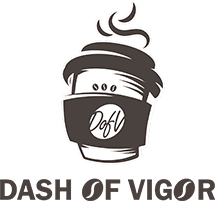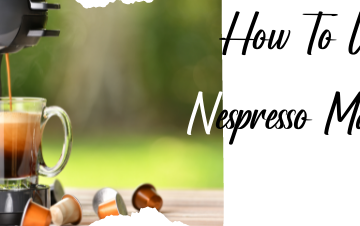Chemex Filters & Alternatives Review
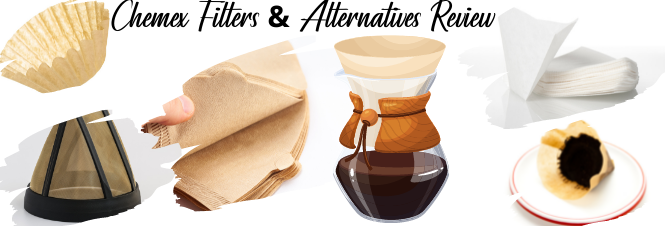
Before I start with the Chemex Filters and possible alternatives, I want to share with you a little history.
Chemex coffee machines were first launched in 1941 but have only lately gained popularity in North America. A new generation of coffee connoisseurs expects expertly made high-quality coffee. Pour-over and other “slow” coffee processes are also gaining popularity in coffee establishments. Slow coffee bars may be found in the new coffee shops, and they are the basis for some of the new elite coffee shops. More coffee lovers seek the extraordinary quality of pour-over coffee in their homes. Chemex coffee makers are one of the greatest brands of pour-over coffee makers, and they are reasonably priced.
Finding the correct filter is essential to use a Chemex coffee maker. So, which are the best Chemex filter alternatives? While there is no ideal substitute for Chemex filters, you may use various coffee filters. They are made of paper, cloth, or metal in a pinch, preferably in cone form.
In the following lines, I will explain why Chemex filters are the best ones you can buy anytime. Then I will discuss your options if you are in a rush. Each option has pros and cons. After reading this essay, you will know which path you want to take personally or will be ready to try them all.
Let`s start.
RELATED TOPIC: Chemex Coffee Ratio
TABLE OF CONTENT:
- What are Chemex filters?
- Chemex filters: beginners` guide
- Brown vs White
- Square vs Round
- Reusable Substitutes
- Could you use other Paper Filters?
- Chemex Filters Bleached vs Unbleached
- BLEACHED COFFEE FILTERS: THE BASICS
- UNBLEACHED COFFEE FILTERS: THE BASICS
- Best Chemex Filters and some alternatives
What Are Chemex Filters?
Chemex filters refine coffee’s tiniest sediment particles and unwanted oils and fats. The filter’s composition allows for the correct infusion period by controlling the filtering rate – not too slow or quick. A good infusion of coffee grinds enhances the flavor of the coffee while also allowing for exact fractional extraction, which filters out the unwanted components.
Chemex Filters: Beginners` Guide
As a result, I have put up a detailed guide to Chemex filter materials and their alternatives. It is not tough to determine which product will best suit your preferences. I understand that the options offered may initially be perplexing, but reading their clarifications below will surely help you.
Brown vs White

An oxidizing cleansing bath is used to bleach white Chemex filters. After that follows a succession of hot water baths. Because the brown versions do not undergo oxidation, they have a natural brown hue. The drawback of natural filters is that they will likely produce a somewhat more papery-flavored coffee. To avoid this undesirable consequence, thoroughly clean the unbleached filter with hot water before using it.
Before adding the coffee grounds, run some hot water through the white coffee filters. This rinse operation is required to eliminate any dust or paper fibers that may have accumulated. Additionally, if you pre-wet your paper with hot water, the initially extracted coffee particles will not soak. This method will help balance out the temperature, resulting in a nicer cup of coffee overall. People uncomfortable with bleached paper filters frequently choose natural paper filters. Most of us who prefer brown paper is motivated by environmental or health concerns linked with bleached paper.
Square vs Round
There is no difference in quality between Chemex square and round filters. They are made of the same material, so there will not be any differences in the flavor of the coffee they produce. Your aesthetic tastes will determine whether you choose one or the other. Practical differences include that some people find it easier to remove a square filter since its corners stand up. I have never had difficulty removing the round ones, so I would not consider this a great benefit of the square ones.
I love square filters since they are cooler and give me a more refined sense. They fit the pompous design of the Chemex carafe in terms of appearance and feel.
Reusable Substitutes
If you do not want to drink your coffee via a Chemex, you may buy a reusable permanent filter, such as a stainless-steel cone or a cloth filter. To save you time, I have analyzed the top Chemex filters alternatives.
But first, I believe it would be helpful to give you a sense of what kind of coffee you will receive with each version:
- Chemex filters – you will receive a lighter-bodied, cleaner cup with more prominent notes. There will be no coffee sediment at the bottom of your cup. Coffee with mild acidity.
- Reusable stainless steel brew — fuller-bodied, closer to a French press coffee maker brew, but with less coffee residue than a French press. Sediment will most likely be found at the bottom of your carafe.
- Cloth filter — more flavorful than Chemex but lighter than the steel type. Compared to stainless steel, there are fewer residual grounds in the vessel. Perfect for individuals who like a more nuanced flavor but do not want to deal with sediment.
Could you use other Paper Chemex Filters?
If you are wondering if you could use other paper filter brands with your Chemex carafe, I completely understand. The thicker original filters are a little more costly. The availability of the originals also differs based on your area. If you are not a big fan of online shopping, you could be tempted to go to your local supermarket. After that, you can get some alternative filters.
Is it, however, worthwhile?
I would not advocate using paper filters other than the originals with a Chemex brewer. Other brands use thinner filters that let more oils get through, resulting in a slightly fuller-bodied cup. This is not necessarily a problem because some people love this beer style. Another reason alternative filters are not advised is that they tend to break apart, especially at the seams, because they are thinner and more delicate.
Alternative filters generally collapse into your carafe when you pour in the water due to the broader size of the Chemex neck. This is because they are designed to be used with other brewing equipment. They also adhere to Chemex’s borders and the built-in spout, preventing air from escaping. This is why none of the paper replacements would make my list.
Nonetheless, some ingenious people have figured out how to make other filters function. Starting the Hario v60 03 filters is an excellent place to start if you want to be one of them. They are compatible with the Chemex 6-cup brewer, the most popular. You may double them for a percolation closer to a Chemex filter. Just be careful not to overfill them with grounds, and use a chopstick to keep the filter from sticking to the walls and preventing steam from entering the brew chamber.
Chemex Filters Bleached vs Unbleached
Before starting with the differences between white and brown coffee filters, I want to say something first. The natural color of the paper filters is brown.
Having said that, let’s move on to the differences.
BLEACHED COFFEE FILTERS: THE BASICS
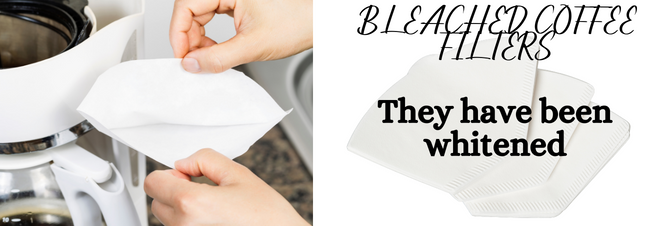
The fundamental distinction between bleached and unbleached coffee filters is that bleached coffee filters have been whitened. This can be accomplished with a small quantity of chlorine or a process known as oxygen bleaching.
The chlorine bleaching process uses a small amount of chlorine to remove the brown color and make it white. Thus the brown paper filter becomes white.
Although there was some concern in the 1980s that chlorine-bleached filters may be dangerous, they are now widely accepted as safe for coffee brewing.
Furthermore, the bleaching process will not alter the taste of your drink. However, there are still worries about their influence on the environment. In fact, according to a 2012 research published in the Environmental Engineering and Management Journal, chlorine-bleaching discharge was “the most serious environmental hazard” in pulp and paper mills.
On the other hand, Oxygen-bleaching necessitates less production and is healthier for the environment. All major filter manufacturers state the bleaching procedure they utilize on their boxes.
How do you ensure the filter is made by the chlorine bleaching process?
If you are unsure about the white coffee filters, check the label. The coffee filter labeled “TCF” is not processed with chlorine bleaching.
UNBLEACHED COFFEE FILTERS: THE BASICS
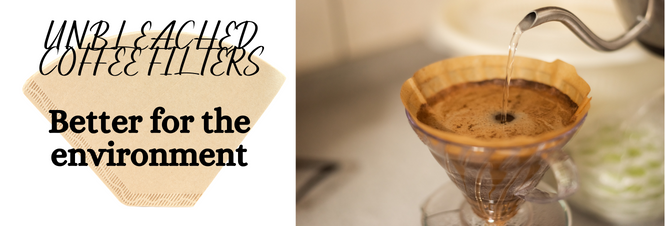
Unbleached filters are not as brilliantly white as their bleached counterparts, but they are somewhat better for the environment. This is because they do not necessitate as much processing.
The majority of the paper you see and use daily is bleached. The color of paper is naturally brown (it does, after all, come from trees). You can get some papery overtones if you use an unbleached filter in your pour-over or coffee machine without rinsing it beforehand.
However, depending on the quality of the bleached coffee filters, you may get a paper taste. Regardless of the brand or manufacturing technique, rinsing paper filters before using them is typically a good idea.
Here is how to remove this unwanted taste:
- Insert the Chemex coffee filter into the basket.
- Wet the filter well over and through it with hot water. This will remove the paper taste.
- Remove the accumulated water.
- Add your favorite coffee to the filter basket.
- Continue by pouring hot water over it.
Best Chemex Filters and some alternatives
Now that we have cleansed the air, let’s look at the top Chemex coffee filters and their alternatives. I only included items that would be beneficial and could be utilized with the glass carafe. These are the best filters to use with a Chemex:
Chemex’s Original Filters

The thick Chemex filters screen coffee oils and prevents residual coffee pieces from getting through, resulting in a low-acid cup with a lighter body.
Another advantage of the Chemex paper filters is that dietary intake of diterpenes has been associated with increased cholesterol. They are simple to utilize. To eliminate the paper flavor from the brown filters, rinse them with hot water for a bit longer. As I mention earlier.
If you bought the Chemex vessel just because it looks attractive and you like a fuller-bodied cup, the other options on the list could be more enticing.
Able Brewing Kone
The Able Brewing Kone is a popular Chemex filter replacement, offering a long-term option for those who don’t want to keep renewing paper filters. It is built in the United States and costs a little more than other options, but it is sturdy and will endure for years. The cost is fully justified. This is a reusable stainless-steel filter designed exclusively for the Chemex carafe.
The Able Kone’s walls do not touch the glass, which allows for proper air circulation and coffee extraction. This filter will offer a more full-bodied cup due to the likelihood of coffee oils flowing through it during percolation. The Able Kone is known for its ease of maintenance. After each usage, be sure to drain and clean it. Because the grounds will still be damp and easy to remove, it will be much easier this way. If you have a sink sprayer, it will be considerably easier.
Only the Able Kone is compatible with the 6-cup, 8-cup, and 10-cup pots. It will not fit if you have a 3-cup kind.
Those who want a fuller-bodied cup, want to save waste, or do not want to buy paper filters can consider investing in a high-quality reusable Chemex replacement.
CoffeeSock Organic Cotton
The Organic Cotton CoffeeSock is an excellent alternative for a cost-effective, long-lasting replacement for your Chemex filters. CoffeeSock is inexpensive and includes two filters. Even if you use one of them every day, it will still operate well after a year, provided you take proper care of it. After each usage, lay the sock out to dry. After each usage, rinse it with water. If it has not dried after the first use, you may use it again the next day — you will have a second sock.
Some people store their cloth filters in zip lock bags wet with water in the fridge or freezer between usage to keep the cloth taste from settling in their coffee. This method is practical if you live somewhere where the humidity is high, and socks do not appear to dry quickly.
The filter is ideal for people sensitive to the papery aftertaste that paper filters can leave. CoffeeSocks are for people who want a more environmentally responsible, sustainable alternative to Chemex filters without compromising the clean cup the originals deliver.
Barista Warrior Stainless Steel Filter
Barista Warrior is less priced than Able Kone and has different filtration technology. It has two sides to it. Mesh and stainless steel are also used on the interior. The objective is to keep all of the dirt out of your cup. The double-wall system has the drawback of being more prone to clogging. To avoid this, immediately rinse the cone after each usage. Grinding it to a medium to coarse consistency would also be nice. This procedure will keep your pipes from clogging. If the Barista Warrior drains more slowly than normal, you may put it in the dishwasher, and it will still operate.
The Barista Warrior may leave some sediment in your coffee, but unless you use the original Chemex filters, you cannot produce an ultra-clean cup. Filters made of stainless steel are also more durable than those of Ovalware. This product is well worth the money. It is one of the finest reusable alternatives to Chemex filters for individuals who are not fussy about the finer points of their coffee.
Bolio Hemp
Hemp from Bolio is one of Chemex filters’ most environmentally friendly alternatives.
They permit more sediment into your cup than a Chemex, but it does not affect the flavor. It must also be cleaned and allowed to dry after each usage.
They will help you feel more at ease if you care about the environment because they are made completely of organic materials. Using this approach, you will not have to waste paper filters after each batch.
Final words for Chemex Filters
It all comes down to personal opinion regarding the flavor or environmental impact of bleached vs unbleached paper coffee filters. If you want to be more environmentally conscious, invest in high-quality unbleached filters that you can rinse well before using. If you are worried your coffee may have a papery flavor even after twice washing, use bleached – ideally oxygen-bleached – filters.
Oh, and do not forget that quality counts! A low-cost bleached filter may give your coffee the same, if not more, papery flavor as a high-quality unbleached filter.
